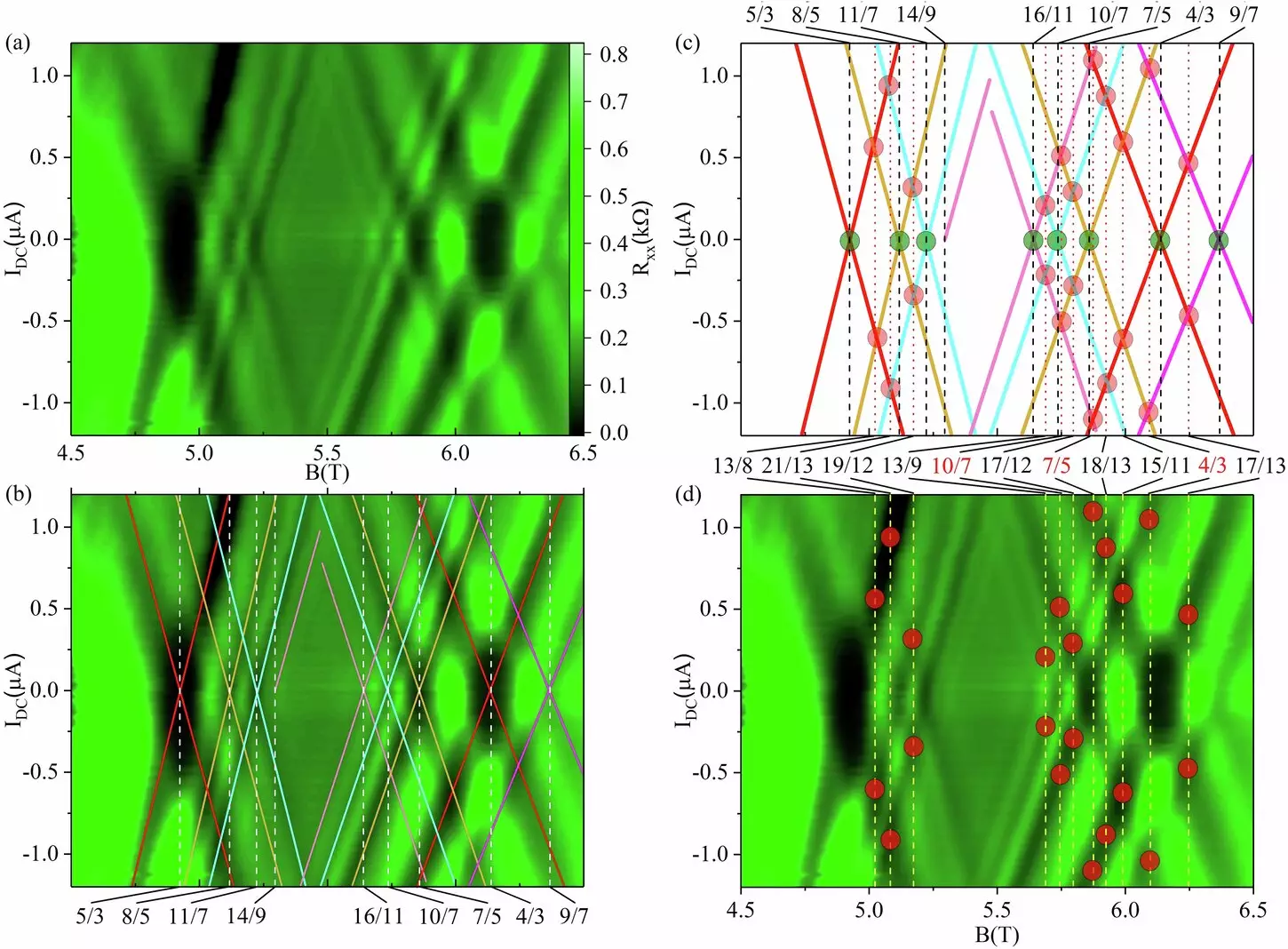In an astonishing twist of reality, researchers at Georgia State University have ventured into a two-dimensional realm that challenges our conventional understanding of physics. This brave new world, referred to as Flatland, allows particles to display a mesmerizing complexity that eludes traditional three-dimensional perspectives. Under the leadership of Professor Ramesh G. Mani and the recent Ph.D. graduate U. Kushan Wijewardena, this exploration into the realm of fractional quantum Hall effects (FQHE) has not only expanded the boundaries of condensed matter physics but has also unveiled possibly transformative technologies for future electronics.
The fundamental notion behind the quantum Hall effect emerged in the 1980s, thanks to Klaus von Klitzing’s groundbreaking observation that electrical measurements could yield accurate values for universal constants. This work, which garnered a Nobel Prize in 1985, acted as a catalyst for subsequent inquiries, leading to the 1998 Nobel recognition of the fractional quantum Hall effect. This phenomenon suggested that in the Flatland realm, particles could exist with fractional charges, a concept that is now fostering an innovative trajectory in modern physics.
Researchers in this field have long been captivated by the idea that particles can exhibit multiple personalities based on their environmental context—an assertion by Mani that captures the dual nature of quantum particles. The team’s latest efforts have pushed into fresh territory by applying unconventional probing methods to reveal unexpected behaviors within these fascinating systems.
One critical advancement has been the exploration of high-mobility semiconductor devices employing gallium arsenide and aluminum gallium arsenide. These materials serve as the experimental grounds for observing FQHE phenomena in thermal conditions approaching absolute zero, coupled with an extreme magnetic field. The team meticulously documented the splitting and crossing of FQHE states, a finding that challenges established models and offers fresh insights into the quantum behavior of materials when subjected to non-equilibrium conditions.
Mani comparisons this research journey to ascending the floors of a building, where traditional studies occupy the foundational levels. Their newest findings serve as a key to the upper echelons of quantum behavior, where unprecedented states exist yet remain largely unexplored. By employing a direct current bias to induce these states, the researchers have opened the door to understanding complex signatures that signify the remarkable behavior of excited states in fractional quantum Hall systems.
Wijewardena shared his enthusiasm, stating, “This is the first time we’ve reported our experimental findings regarding the achievement of excited states of fractional quantum Hall states, and our discoveries are truly riveting.” This sentiment reflects the excitement and the challenges faced in explaining the nuanced observations they recorded.
The significance of these findings stretches far beyond theoretical physics. By uncovering the mechanics of non-equilibrium excited-state FQHEs—possibly of hybrid origins—this research holds the potential for groundbreaking contributions to fields such as quantum computing and materials science. A deeper understanding of these exotic states can pave the way for innovations that lead to the next generation of electronics—faster, lighter, and more energy-efficient devices.
The relevance of this research cannot be overstated. As society shifts towards a high-tech economy, the implications of FQHE studies resonate in the development of advanced technologies, from quantum computers to high-efficiency solar cells. These inquiries not only propel scientific knowledge but also cultivate new generations of students equipped to tackle future challenges.
Looking ahead, Mani, Wijewardena, and their team are dedicated to extending their research under even more extreme conditions. This pursuit represents a commitment to discovering additional intricacies within these quantum systems and reveals the wondrous potential hidden in Flatland. As they strive for deeper insight, each experiment provides an opportunity for uncovering even more surprising discoveries that could redefine our understanding of materials and their applications.
The exploration of fractional quantum Hall effects by this team at Georgia State University is more than just a scientific endeavor. It heralds a revolutionary phase in condensed matter physics that challenges preconceived notions and invites ingenuity. By daring to delve into the nuances of Flatland physics, these researchers are not only laying the foundation for transformative technological advancements but also inspiring future inquiry into the unknown realms of science. As they push forward, the promise of new discoveries continues to beckon, illuminating paths not just for scientific advancement but for a sustainable, technologically-advanced future.

